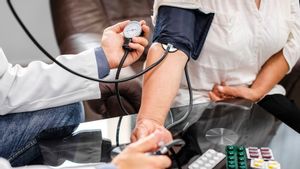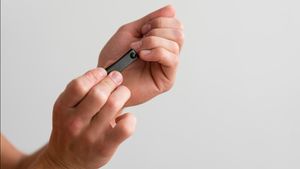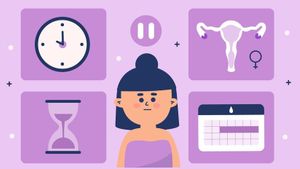JAKARTA – Stroke affects the arteries leading to and within the brain. Bad habits are the second cause besides genetic history. Both categories of causes contribute to clogging of blood vessels that carry oxygen and nutrients to the brain so that they clot or burst. So, how to anticipate so as not to have a stroke?
Learn from Gemilang Tarigan, Chairman of the DPP Aptrindo (Indonesian Truck Entrepreneurs Association), who had a stroke. He changed his habits as a heavy smoker, lack of exercise, and no dietary restrictions after suffering a stroke. After changing his habits, he became healthier, recovered from a stroke, and was still able to move but not push himself.
Reported by the American Stroke Association page, Monday, November 15, when a clot occurs in the arteries leading to and within the brain, the brain cannot get blood that carries nutrients and oxygen and causes brain cells to die.
There are 4 types of stroke, namely ischemic stroke (blood clot), hemorragic stroke (bleeding), TIA (transient ischemic attack) or called mini stroke, and crytogenic stroke. To prevent this, here's how to do it.
1. Healthy dietCiting a journal published in the US National Library of Medicine National Institutes of Health, the first preventive step that can be taken to prevent stroke is to eat healthy foods. A healthy diet meets the body's macronutrient and micronutrient needs. Such as eating more colorful vegetables and fruits, limiting the consumption of fatty foods, fulfilling protein, and the right portion of carbohydrates.
2. Limit foods with added sweetenersThe risk of stroke is higher when blood sugar in the body is high. For this reason, it is necessary to limit foods with added sweeteners in anticipation of the occurrence of arterial clots, especially in the brain. Choose natural sweeteners, for example from fruit and low-glucose sweeteners every day.
3. Lowering blood pressureHigh blood pressure contributes to four times the risk of stroke, reported by the Harvard Health Publishing page, Harvard Medical School. For both men and women, it is necessary to monitor blood pressure. If increased, immediately lowered to 120/80.
How to lower blood pressure, consume less salt or salty foods, choose fatty foods without polyunsaturated and monounsaturated, eat 4-5 cups of fruit and vegetables every day, one serving of fish 2-3 times a week, whole grains, and low milk fat.
4. Lose weightObesity is associated with complications, including high blood pressure and diabetes. If you are overweight, losing at least 5 kilograms can have a big impact on reducing your risk of stroke.
5. Drink a little alcoholIf you like to enjoy wine, limit the size. A study shows that drinking only one glass a day or reducing the previous size can reduce the risk of stroke.
6. Regular exerciseExercise not only contributes to weight loss and blood pressure. Exercise is also useful for reducing the potential for stroke and releasing stress. At least, exercise is done 5 days every week with moderate intensity.
7. Treating irregular heartbeatAn irregular heartbeat called atrial fibrillation can cause clots in the heart. These clots can travel to the brain and cause a stroke. In fact, people with atrial fibrillation are up to five times more likely to have a stroke. To treat atrial fibrillation, which is characterized by shortness of breath and frequent heart palpitations, consult a doctor so that you get the appropriate solution.
In addition to anticipating stroke, if you smoke, reduce or quit. Because smoking can accelerate the formation of clots and thicken the blood and increase the buildup of plaque in the arteries. Next, get enough rest, get quality sleep, and do relaxing activities.
The steps above, not only reduce the risk of stroke. But it can be done to dispel all serious diseases.
The English, Chinese, Japanese, Arabic, and French versions are automatically generated by the AI. So there may still be inaccuracies in translating, please always see Indonesian as our main language. (system supported by DigitalSiber.id)













